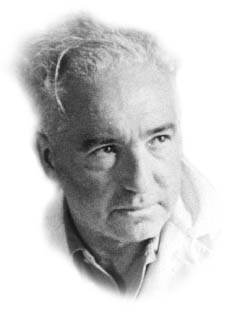 |
| Wilhelm Reich, in his lab 1944. |
 |
| Herbert Marcuse |
*See Patrick J. Buchanan's New York Times bestseller "The Death of the West" (2002).
Join board-certified psychiatrist, psychiatric orgone therapist and Wilhelm Reich scholar, Richard Schwartzman, D.O. for a discussion that brings Reich’s thinking and discoveries to a range of contemporary topics. Visitors can add their thoughts on any post and ask questions. If you need to speak with Dr. Schwartzman directly, you may do so by calling his Solebury office at (215) 862-9939.
 |
| Wilhelm Reich, in his lab 1944. |
 |
| Herbert Marcuse |
 |
| David Brahinsky, Ph.D. |
 |
| Wilhelm Reich, M.D. |
One of Wilhelm Reich’s most important and lasting contributions is a unique treatment for emotional disorders called psychiatric orgone therapy. Reich began as a psychoanalyst and was a member of Freud’s inner circle, but moved away from Freud’s method of free association when he developed a more effective verbal approach he called character analysis. Later he came to recognize the existence of a specific biologic energy in living organisms that he called “orgone,” which was coined from the word “organism.” With this discovery Reich was able to combine his verbal method with a technique that could normalize a person’s energy. The result was an entirely new approach to treating emotional disorders that he named orgone therapy.
Reich’s work with patients convinced him the disturbance in an individual’s energy state is caused by contractions in the body, especially in the musculature. He called these contractions “armor,” and established that they begin to develop in infancy as a way to block out emotionally painful events.
Past traumatic experiences are locked in the body--and they remain throughout life. How this happens is not fully understood, but there is no question that anxiety, anger and sadness, as well as the other upsetting feelings and emotions from childhood are not forgotten. Armor not only holds the disturbing past, causing it to remain alive but out of consciousness awareness, but it also affects how one feels and functions. Because living a natural healthy life depends upon whether a person’s energy flows freely or is blocked, the aim of psychiatric orgone therapy is to free up energy by breaking down armor. As these areas of holding dissolve, patients release their long buried feelings and emotions in the safety of the therapist’s office. They most usually surface spontaneously with the specific method Reich innovated, without the need of urging or any intervention on the part of the treating psychiatrist. However, occasionally, pressure needs to be applied to spastic muscles, or other techniques used to normalize the body. Because this treatment combines a verbal approach with a physical technique, it addresses both the mind and the body to bring about profound changes in how one thinks, feels and functions.
Today almost all people seeking treatment from a psychiatrist are given medications to reduce their symptoms. However, with psychiatric orgone therapy it is usual that patients, over time, find themselves able to wean themselves off medication and function without pharmacologic treatment. Reich’s therapy is unique in that it not only relieves distressing symptoms, but also does much more. It enables individuals to expand and feel pleasure, and better enjoy the many satisfactions life has to offer.
There are people who claim to practice some form of “Reichian” or “orgone” therapy, even though they have had no formal training in medicine or psychology. Often the techniques used by these self-proclaimed therapists have little or nothing to do with the very specific methods Reich developed and taught. The value of such therapies is questionable and may even harm those who get involved in them.
Qualified psychiatric orgone therapists have extensive training. They are physicians who have gone on to specialize in psychiatry and then in the very unique subspecialty of orgone therapy. They practice in much the same way as Reich did more than a half century ago. Ph.D. Psychologists who have had proper training can practice a form of orgone therapy safely and effectively. However, it is crucial they have supervision by a qualified psychiatric orgone therapist.
Wilhelm Reich (1897-1957) was an Austrian born psychiatrist who is recognized as one of the most brilliant and controversial figures in the history of psychiatry. His life was extremely complex. Outbreaks of fascism, communism, and war forced him to live in five European countries before he ultimately came to America.
As a young man, Reich became interested in the work of Sigmund Freud and became a practicing analyst and member of the Vienna Psychoanalytic Society. Reich's skill as an analyst, and as the author of many key articles on psychoanalysis, led Freud to select him as a first-assistant physician when Freud organized the Psychoanalytic-Polyclinic in Vienna in 1922, the year Reich graduated medical school.
Like many extraordinarily bright individuals with a high capacity for work and their own ideas, Reich ultimately broke from established dogma to pursue his own direction. He was expelled from Freud's organization. The stated reason for his expulsion was that his thinking and activities were angering the two great forces in power at that time, Stalin and Hitler, but it is more likely that Freud's group was intolerant of his divergent ideas.
Reich was a true independent who studied and wrote about many fields of human endeavor beyond psychology. These include sociology, politics, religion, biology, chemistry, agriculture, astronomy and more.